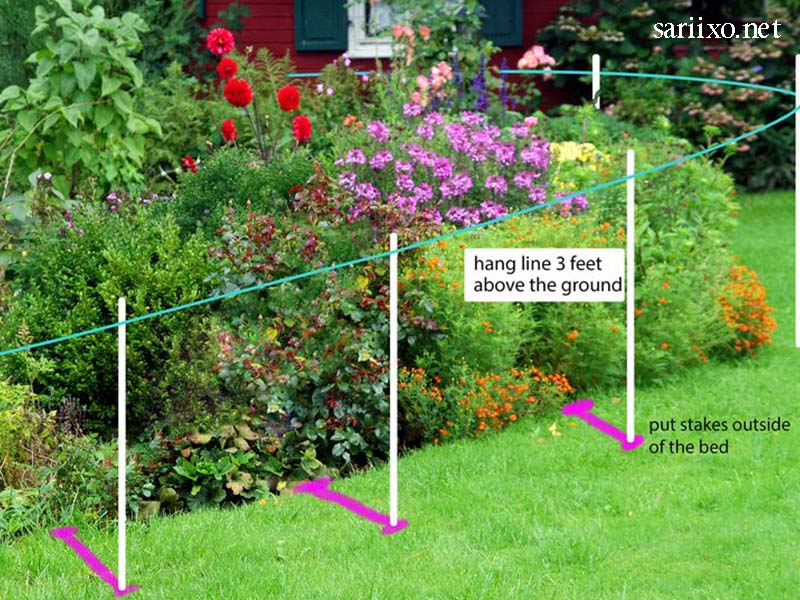Deer can be beautiful creatures, but when they invade your garden, they can quickly turn into a gardener’s worst nightmare. Their insatiable appetite for flowers, fruits, and vegetables can devastate even the most meticulously maintained gardens. However, there are numerous effective strategies you can implement to keep deer out of your garden and protect your plants. In this comprehensive guide, we’ll explore proven methods, tips, and techniques to help you safeguard your garden from these unwelcome visitors.
Understanding Deer Behavior
Before diving into the strategies for deterring deer, it’s essential to understand their behavior. Deer are creatures of habit, often following the same paths and routines. They tend to browse on familiar plants and are particularly drawn to gardens that provide a buffet of tender foliage.
Deer are most active during dawn and dusk, which are known as crepuscular hours. They also tend to avoid areas with strong odors, loud noises, and anything that might pose a threat to their safety. Understanding these behaviors can help you tailor your strategies to effectively keep them at bay.
Fencing
The Ultimate Barrier
One of the most effective ways to keep deer out of your garden is to install a sturdy fence. A well-constructed fence can act as a physical barrier, making it difficult for deer to enter your garden.
Height Matters
For a fence to be effective against deer, it should be at least 8 feet tall. Deer are excellent jumpers and can easily clear lower fences. If constructing a tall fence is impractical, consider using a double fence, where an inner fence is placed closer to the garden at a height of around 4 feet, creating an additional obstacle for deer.
Types of Fencing
- Wooden Fences: Sturdy and aesthetically pleasing, wooden fences can be built to the necessary height. However, they require maintenance to prevent decay.
- Wire Fences: Welded wire or chain-link fencing can be effective if installed properly. Ensure the mesh size is small enough to prevent deer from squeezing through.
- Electric Fences: If you’re looking for a more high-tech solution, electric fencing can deter deer. These fences deliver a mild shock to deer, discouraging them from returning.
Plant Selection
Choosing Deer-Resistant Varieties
Selecting the right plants can significantly reduce the chances of deer munching on your garden. Certain plants are naturally unappealing to deer due to their taste or scent.
Recommended Deer-Resistant Plants
- Herbs: Many herbs, such as lavender, rosemary, and sage, have strong scents that deer dislike. Planting these around your garden can help create a natural barrier.
- Flowers: Consider planting daffodils, marigolds, or alliums. These flowers are known for their unpalatable taste to deer.
- Shrubs: Some shrubs, like holly, juniper, and barberry, are less attractive to deer and can also serve as a natural deterrent.
Diversity is Key
Creating a diverse garden with various plants can make it less attractive to deer. When deer encounter a variety of scents and tastes, they may be less inclined to stick around.
Natural Deterrents
Scents and Repellents
Deer have a keen sense of smell, and using natural deterrents can help keep them away from your garden.
Homemade Repellents
- Soap: Hanging bars of soap in your garden can deter deer due to the strong scent. Use fragrant soaps, such as Irish Spring, and replace them every few months for maximum effectiveness.
- Garlic and Pepper Spray: Mixing crushed garlic and cayenne pepper in water can create a powerful spray. Apply this mixture to your plants to ward off deer.
- Predator Urine: Using predator urine (such as coyote or fox) can create the illusion of danger in your garden. You can purchase these products at garden stores or online.
Commercial Repellents
There are numerous commercial deer repellents available that contain strong odors or taste aversions to keep deer away. Look for repellents that contain putrescent egg solids, garlic, or capsaicin (the active ingredient in chili peppers).
Scare Tactics
Using Visual and Auditory Deterrents
Deer are skittish animals that tend to avoid areas that seem unsafe. Implementing scare tactics can help make your garden less inviting.
Visual Deterrents
- Reflective Objects: Hanging reflective tape, old CDs, or aluminum foil in your garden can create a flashing effect that scares deer away.
- Decoys: Placing decoys, such as a realistic owl or a motion-activated scarecrow, can create a sense of danger. However, be sure to change their position regularly to prevent deer from becoming accustomed to them.
Auditory Deterrents
- Noise Makers: Wind chimes, bells, or other noise-making devices can startle deer and keep them away. Consider using motion-activated devices that emit sounds when deer approach.
- Dogs: If you have a dog, allowing them to roam the garden can help deter deer. The presence of a predator can be a significant deterrent.
Garden Layout and Maintenance
The way you design and maintain your garden can also play a role in keeping deer out.
Strategic Plant Placement
Place your most vulnerable plants closer to the house or in areas that are less accessible to deer. Surround these plants with more deer-resistant varieties to create a natural barrier.
Regular Maintenance
Keeping your garden tidy can discourage deer from lingering. Trim back overgrown areas, and remove fallen fruit or debris that might attract deer. A well-maintained garden appears less inviting to these animals.
Timing
Seasonal Considerations
Deer behavior changes with the seasons, and understanding these changes can help you better protect your garden.
Spring and Summer
During the spring and summer months, deer are more likely to forage for tender new growth. Implement your deterrent strategies vigorously during this time, as deer are actively searching for food.
Fall
As food sources dwindle in the fall, deer may become more aggressive in their search for sustenance. It’s crucial to reinforce your defenses and maintain vigilance during this season.
Winter
In winter, deer may struggle to find food, leading them to browse on evergreen shrubs and trees. If you live in an area where deer are prevalent, consider wrapping vulnerable trees and shrubs with burlap or protective netting to shield them from hungry deer.
Combining Strategies for Maximum Effectiveness
To effectively keep deer out of your garden, consider combining multiple strategies for a comprehensive approach. For example, installing a fence along with planting deer-resistant varieties and using natural repellents can create a multi-layered defense system.
Adapt and Adjust
Monitor your garden regularly and adjust your strategies as needed. If you notice deer becoming more persistent, try different repellents or add new visual deterrents to keep them guessing.
Community Solutions: Collaboration with Neighbors
If you live in an area with a significant deer population, consider collaborating with your neighbors to create a united front.
Community Fencing
If feasible, work together to build a fence that surrounds multiple gardens. This collective effort can provide a more extensive barrier that is more challenging for deer to breach.
Sharing Techniques
Share successful strategies and tips with your neighbors. What works for one garden might be helpful for another, and pooling resources can lead to more effective solutions.
Conclusion
Keeping deer out of your garden requires a combination of understanding deer behavior, employing various deterrent strategies, and maintaining your garden effectively. By implementing these methods, you can protect your plants and enjoy a thriving garden free from deer-related damage. Remember that persistence is key; with consistent effort and a bit of creativity, you can create a deer-free haven for your plants to flourish.
Arming yourself with knowledge and strategies will not only safeguard your garden but also enhance your gardening experience. Happy gardening!



